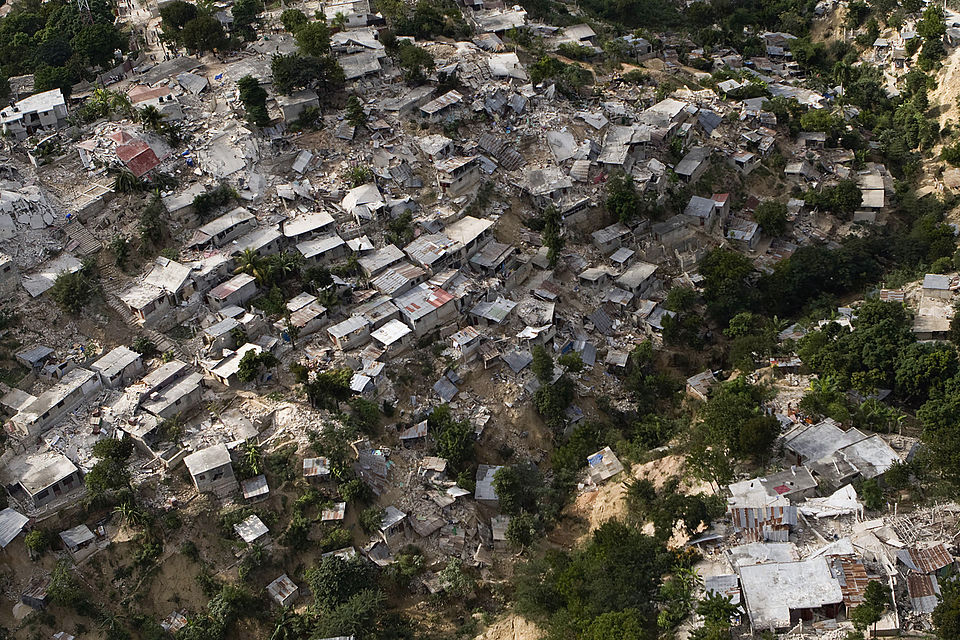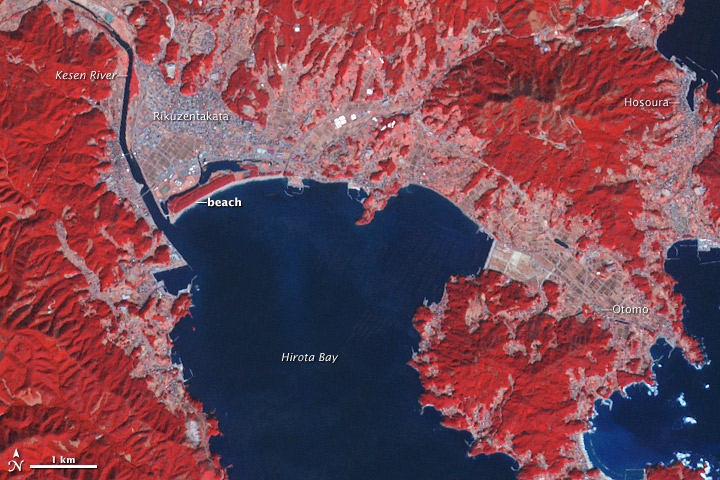Edexcel Specification focus:
‘The social and economic impacts of tectonic hazards (volcanoes, earthquakes and tsunamis) on people, the economy and environment in countries at different levels of development.'
Tectonic hazards affect people, economies and environments differently depending on a country’s level of development, influencing vulnerability, capacity to respond, and long-term recovery.
Social Impacts of Tectonic Hazards
Effects on People and Communities
Tectonic hazards such as earthquakes, volcanic eruptions and tsunamis can cause severe and often immediate harm to human populations.
Death and injury: Ground shaking, pyroclastic flows, and tsunami waves can result in high fatalities and mass casualties.
Displacement: Damage to housing and infrastructure forces people into emergency shelters or temporary camps.
Disruption of basic services: Health care, education, water and electricity supplies may be cut off, worsening the humanitarian crisis.
Psychological trauma: Survivors may experience stress, anxiety, and long-term mental health challenges.
Social Impact: The effects of an event on the health, wellbeing, and everyday lives of individuals and communities.
The scale and severity of social impacts are shaped by development status:
In low-income developing countries (LIDCs), housing is often poorly constructed, leading to greater building collapse and more casualties.

Aerial view of collapsed informal housing in Port-au-Prince following the 12 January 2010 Haiti earthquake (M7.0), demonstrating how low construction standards amplify social vulnerability in LIDCs. Source
In emerging countries, urbanisation and rapid population growth can create high-risk settlements, such as informal housing near active fault lines.
In developed countries, strong building codes and emergency systems reduce death tolls but do not eliminate them entirely.
Examples of Social Disruption
Healthcare systems may become overwhelmed by the injured.
Schools and workplaces may shut down for extended periods.
Access to clean water and sanitation can be compromised, increasing disease risk.
Economic Impacts of Tectonic Hazards
Immediate and Long-Term Economic Effects
Tectonic hazards often result in significant financial costs, both directly and indirectly.
Damage to infrastructure: Roads, railways, ports, and bridges may be destroyed, halting commerce and aid delivery.
Industrial and commercial losses: Factories and businesses may be shut down, causing job losses and lower productivity.
Cost of reconstruction: Governments may need to allocate large budgets for rebuilding, which can divert funds from other priorities.
Economic Impact: The financial cost of a hazard event, including direct damages and losses in income, production, and trade.
The burden of economic loss varies by development level:
Developed countries tend to have higher absolute costs due to greater asset values and infrastructure density.
Emerging and developing countries experience greater relative costs as a percentage of their GDP, which can have long-lasting effects on economic growth and poverty.
Insurance and Aid
In developed nations, insurance coverage helps recover losses, and government funding is typically available for rebuilding.
In LIDCs, access to insurance is limited, making communities more dependent on international aid and non-governmental organisations (NGOs) for recovery.
Economic Disruption Across Sectors
Agriculture: Ash fall or tsunami flooding can damage crops, livestock and fisheries.
Tourism: Destinations near hazard zones may lose visitors, leading to loss of income.
Trade: Port closures and transport damage hinder the flow of goods.
Environmental Considerations and Interactions
Although this subsubtopic centres on social and economic impacts, it is important to note that tectonic hazards also affect the environment, often worsening human outcomes.
Secondary environmental effects like landslides, fires and pollution can increase the impact on people and economies.

False-colour ASTER image of Rikuzentakata on 14 March 2011, three days after the Tōhoku tsunami, highlighting widespread flooding and debris flows that undermined local agriculture and damaged critical infrastructure. Source
Long-term degradation, such as soil infertility from ash or salinisation from tsunami flooding, can compromise recovery.
Development and Differential Impacts
How Development Levels Influence Impacts
The level of development plays a crucial role in determining the scale of social and economic impacts:
High-income countries usually experience:
Lower mortality rates due to strict building regulations and effective emergency responses.
Higher economic costs in absolute terms due to urban density and infrastructure.
Low-income countries often face:
Higher death tolls due to poor construction, limited healthcare, and delayed responses.
Slower recovery due to limited state capacity and weaker economic foundations.
Factors Contributing to Impact Differences
Population density: More densely populated areas suffer more intense impacts.
Governance and planning: Effective disaster planning reduces exposure and vulnerability.
Public awareness: Education and drills increase preparedness and reduce panic.
Access to technology: Early warning systems and seismic-resistant engineering reduce risk.
Types of Tectonic Hazards and Impact Patterns
Earthquakes
Often cause the highest number of casualties.
Can devastate urban areas quickly, with minimal warning.
Associated secondary hazards such as landslides and fires amplify impacts.
Volcanoes
May allow more advance warning than earthquakes.
Localised impacts but can be deadly, especially with pyroclastic flows and lahars.
Long-term displacement and agricultural damage are common.
Tsunamis
Can devastate large coastal areas, often with very high death tolls.
Economic impact is severe due to destruction of ports, resorts, and fisheries.
Often affect multiple countries, increasing recovery complexity.
Summary of Key Differences by Development Level
Developed Countries
Strong infrastructure limits casualties.
High financial loss, but faster recovery.
Insurance and state aid available.
Emerging Economies
Rapid growth often outpaces safety measures.
High population density in hazard-prone areas.
Variable response capacity.
Developing Countries
High vulnerability due to poverty and poor planning.
Limited resources for emergency response.
Heavily reliant on external aid.
Importance for Risk Reduction
Understanding how social and economic impacts vary by location and development level is essential for:
Designing effective risk reduction strategies.
Promoting resilience and recovery.
Enhancing global humanitarian responses to tectonic disasters.
FAQ
Immediate economic impacts include direct damage to buildings, transport, and infrastructure, along with emergency response costs and short-term business closures.
Long-term impacts affect economic development over months or years. These include:
Loss of investor confidence
Tourism decline
Increased public debt due to reconstruction spending
Loss of productivity and employment
Recovery can be slower in low-income countries due to limited access to capital, insurance, and skilled labour.
Emerging economies often experience rapid urban growth without adequate planning or infrastructure upgrades.
This can result in:
High population densities in hazard-prone areas
Informal settlements with poor construction
Limited enforcement of building codes
Although economically stronger than LIDCs, emerging countries may have unequal wealth distribution, leaving vulnerable populations highly exposed.
Informal housing is often built:
Without regulation or safety standards
On marginal land (e.g. hillsides or near rivers)
Using weak construction materials
This makes such housing highly vulnerable to collapse during earthquakes or landslides. These areas may also be poorly connected to emergency services, delaying aid and increasing casualties.
Secondary hazards like landslides, fires, and flooding can prolong uninhabitability in affected areas.
For example:
Landslides may block roads, isolating communities
Fires may destroy emergency shelters or contaminate water sources
Flooded or ash-covered land may be unsuitable for rebuilding
These consequences can force people into prolonged temporary housing, delaying return and rebuilding efforts.
While developed countries have more financial and technical capacity, challenges still arise, such as:
High-value infrastructure requiring expensive repairs
Complex insurance and compensation claims delaying rebuilding
Psychological and community impacts that can hinder social recovery
In some cases, older urban areas may be more vulnerable, requiring complete redesigns to meet modern safety standards.
Practice Questions
Question 1 (2 marks)
Define what is meant by economic impact in the context of a tectonic hazard.
Mark Scheme:
1 mark for a basic definition:
e.g., A financial cost or consequence of a tectonic hazard.1 mark for elaboration or example:
e.g., This includes damage to infrastructure, business losses, or reduced trade.
Question 2 (6 marks)
Explain how the social and economic impacts of tectonic hazards differ between countries at contrasting levels of development.
Mark Scheme:
1–2 marks: Basic understanding with limited development.
e.g., Poorer countries are more affected than richer ones.3–4 marks: Clear explanation with some development of contrasts.
e.g., In developing countries, buildings are often not earthquake-resistant, leading to more deaths. Developed countries suffer higher financial losses but recover more quickly.5–6 marks: Well-developed explanation with clear contrasts and detail.
e.g., Developed countries have stronger infrastructure and emergency services, resulting in fewer deaths but high absolute economic costs. In contrast, developing countries may suffer higher casualties due to poor housing and limited medical services, and long-term economic strain due to weaker economies and reliance on aid.Award credit for use of appropriate examples, although these are not required.

